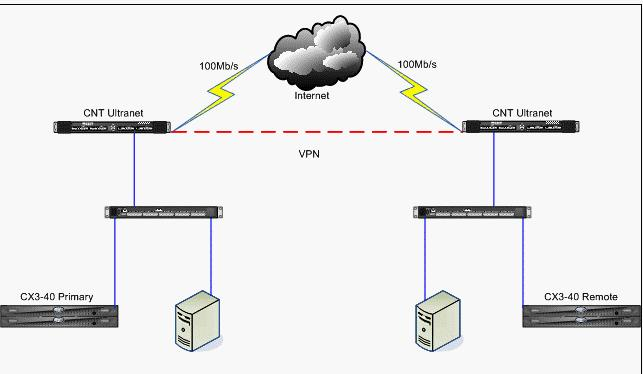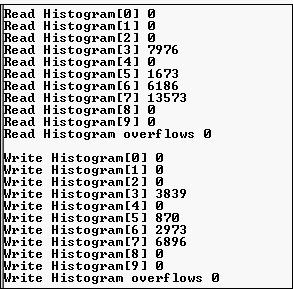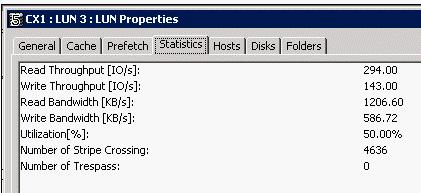CLARiiON Solutions Expert Exam for Storage Administrators v5.0
Question 1
Your organization has implemented Replication Manager as a backup solution. When configuring the replica for your Exchange Server cluster, you specified EX-MBX-CMS1A as the registered host. Replication Manager cannot discover any Exchange databases.
The table below outlines the configuration of the Exchange Server cluster:

Which host should have been registered with Replication Manager?
- A. EX-CMS1-CLUS_NODE_B
- B. EX-CMS1-CLUS_NODE_A
- C. EX-MBX-CMS01
- D. EX-MBX-CMS1B
Answer : C
Question 2
A customer has an SQL database that initiates a clone for reporting nstance by accounting
The clone is mounted read-only on an alternate host. The production LUN is RAID 1/0 and is 750 GB in size.
The SP event logs indicate that the clone LUN was trespassed during the synchronization.
What is the status of the clone?
- A. Peer SP continues the operation but the clone is corrupt
- B. Peer SP fractures the clone and will need manual resynchronization
- C. Peer SP halts the operation and the clone is now corrupted
- D. Peer SP will continue the synchronization and the clone remains usable
Answer : D
Question 3
A customer has two 250 GB MirrorView/S mirrored LUNs between two dedicated CX3-40s.
The two CX3-40s have been connected via CNT FCIP routers over DWDM for more than a year.
The customer is running their annual DR test and the resynchronization operation is taking substantially longer than last year with the same amount of data. No host LUN changes and no other LUNs are currently active.
What is the most likely cause?
- A. Lack of buffer credits
- B. LUNs are heavily fragmented
- C. LUNs have the default prefetch value
- D. No Write Intent Log
Answer : A
Question 4
One year ago, a customer installed CLARiiON storage to support an application. During installation CLARalert was configured, tested, and found to work properly.
During a routine check, the customer's storage administrator found a fault with the array due to a disk failure. However, the customer was not notified of the fault. What is a likely cause for this problem?
- A. Corrupt navimon.cfg file
- B. Corrupt navimon.conf file
- C. Corrupt naviseccliMonitor.xml file
- D. Corrupt navisphereMonitor.conf file
Answer : A
Question 5
A customer notices they are running low on Reserved LUN Pool (RLP) space and all of the
RLP LUNs reside in the same RAID group. How should they increase the RLP space?
- A. Add disks to the RAID group of the current RLP LUNs. Create new LUNs and stripe the new LUNs to the existing RLP LUNs.
- B. Add disks to the RAID group of the current RLP LUNs. Create new LUNs and assign them to the RLP.
- C. Add disks to the RAID group of the current RLP LUNs. Create new LUNs and increase the size of the current LUNs by concatenating the new LUNs to the existing LUNs.
- D. Create a new RAID group. Create new LUNs and increase the size of the current LUNs by concatenating the new LUNs to the existing LUNs.
Answer : B
Question 6
A customer has a new cost-cutting policy in place and as a result will have data center personnel present only during normal working hours; 8 A.M to 5 P.M. This means that backups will be performed during normal office hours. Backups currently take 6 hours to complete.
You explain the benefit of SnapView in backup environments. The customer wants a solution that will allow its backup to be run during work hours and will have minimal performance impact on its application. The customer also wants to be able to recover from corruption of its application data in a short time; preferably less than 1 hour. You recommend the use of a clone but the customer wants to use a snapshot. You explain the performance implications but the customer wants to see numerical proof.
The customer database LUN sees random 8 KB I/Os at a rate of 500 IOPS with the read/write ratio at 4:1. Which calculations should be presented to the customer as validation?
Copy on First Write (COFW)
Reserved LUN Pool (RLP)
- A. COFW during the day will cost one random 8 kB read of the production LUN and one random 8 kB write to the RLP for each 8 KB of data written to the database. Backup operations will cause additional sequential reads of the production LUN and RLP.
- B. COFW during the day will cost 100 random 8 kB reads/s of the production LUN and 200 64 kB writes/s to the RLP. Backup operations will cause additional sequential reads of the production LUN and RLP.
- C. COFW during the day will cost 100 random 64 kB reads/s of the production LUN. The load on the RLP will be 100 64 kB writes/s and 200 8 kB writes/s. Backup operations will cause additional sequential reads of the Production LUN and RLP.
- D. COFW during the day will cost 100 sequential 64 kB writes/s of the production LUN and 200 64 kB writes/s to the RLP. Backup operations will cause additional random reads of the production LUN and RLP.
Answer : C
Question 7
Click the Exhibit button.
A customer is complaining that from time-to-time the server connected to the CX3-40s loses connection to their LUNs on either the primary or remote side. What should be recommended to the customer?

- A. Implement FCIP-capable devices
- B. Implement iFCP-capable devices
- C. Implement Keepalives
- D. Increase the buffer credits
Answer : B
Question 8
A customer is using Replication Manager to create VSS replicas of their Exchange 2007 mailbox database residing on a CLARiiON array. Prior to log truncation but after creating the replica, which process must take place in the execution sequence?
- A. Check database consistency using ESEUTIL
- B. Check database logical consistency using ISINTEG
- C. Extract the database and log paths
- D. Mount the replica to an alternate host
Answer : D
Question 9
A storage administrator tries to automate the collection of NAR data from a CLARiiON
CX3-80. When run on demand, the script runs correctly on both the production and development systems. However, when implemented on the production system using
CRON, it fails to provide the NAR files as expected. What is a likely cause of this failure on the system running the script?
- A. Incorrect version of Java is installed
- B. Incorrect version of the Navisphere CLI is installed
- C. Navisphere security file is not created
- D. Wrong version of CRON is installed
Answer : C
Question 10
A customer is planning to use a script to activate SnapView snapshots. The commands used should return the drive letter of the activated snapshot. Which command should be used?
- A. admhost activate -s session_name on the production host
- B. admhost activate -s session_name on the backup host
- C. naviseccli -h SP_name snapview -activatesnapshot session_name on the backup host
- D. naviseccli -h SP_name snapview -activatesnapshot session_name on the production host
Answer : B
Question 11
The Navisphere Secure CLI will be used in the automation of SAN Copy scripts for a customer's backup and recovery plan. The backup will be done once a week. The database will be placed in hot backup mode and the file system, with the data files, will be flushed to disk.
In preparation for the testing process, a CLARiiON storage array has been configured to support SAN Copy to a Symmetrix storage array. The Navisphere Secure CLI scripts function as expected and the tests complete successfully. The customer prepares to break down the environment and reconfigure it for production but finds that they cannot remove the storage groups they created.
Which task needs to be completed to be able to proceed?
- A. Check for and remove SAN Copy connections to the target CLARiiON
- B. Remove the LUNs from the storage group
- C. Use Navisphere Secure CLI in engineering mode to force destruction of the storage group
- D. Use Navisphere Secure CLI to force destruction of the storage group
Answer : A
Question 12
A customer has a CLARiiON at a remote field office with a failing disk. The activity will require enlisting the help of a facilities person at the remote site to physically remove the disk. Remote assistance can be simplified by turning on the LEDs on the DAE that contains the failing disk.
The following command was issued to flash the LEDs:
naviseccli -h clar1212_spa flashleds -lun 15 on
The remote field office reports that the command did not turn on any lights. What is the likely cause of the problem?
- A. Command has to be run against the SP with disk ownership
- B. Command syntax is incorrect
- C. Command will not work as the errors have not reached the low watermark
- D. Engineering mode is required
Answer : B
Question 13
Click the Exhibit button.
The exhibit shows part of the etlun output from LUN 21. What can be concluded from the output?

- A. The I/O activity is not causing forced flushes
- B. The information was captured from 10 (ten) 2-minute polling intervals
- C. The number of 256 kB reads is identical to the number of 256 kB writes
- D. The number of 8 kB reads is double the number of 8 kB writes
Answer : C
Question 14
A customer has a 300 GB application LUN on which they would like to take a snapshot.
The LUN will later be presented to a backup host for testing. The production LUN stays idle during the backup test. The testing process performed by the backup host is write intensive and will change all the data on the LUN during the test period. What is the minimum required Reserved LUN Pool size?
- A. 220 GB
- B. 420 GB
- C. 620 GB
- D. 820 GB
Answer : B
Question 15
Click the Exhibit button.
What is true of LUN 3?

- A. Disk crossings are excessively high
- B. Disk utilization is above the best practices threshold
- C. The host data is misaligned
- D. The number of stripe crossings indicates a large I/O size
Answer : C